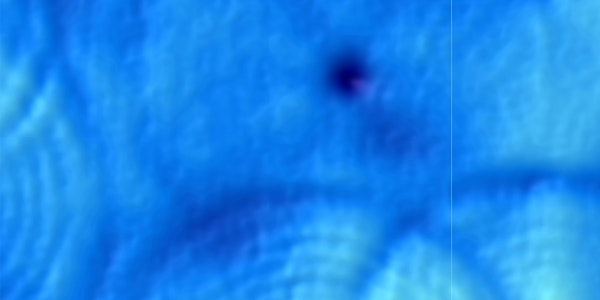NYU Dept of Physics and Dean for Science Present: A Public Physics Talk
Professor Ali Yazdani, Princeton University
Hunting for Exotic Quantum Particles under the Microscope
The search for exotic quantum particles is something we usually associate with large particle-colliders, such as the Large Hadron Collider (LHC) in Geneva, Switzerland that enabled the discovery of the Higgs boson recently. Yet, another area of physics, known as condensed matter or solid-state physics, now allows us to tailor crystals of solids such that exotic quantum particles—“quasi-particles” – emerge inside materials. These emergent quasi-particles are stable within materials unlike other exotic quantum particles, which can only live for a small fraction of a second in a vacuum. Quasi-particles may one day make it possible to build electronic technologies such as those required for quantum computing.
Tonight’s lecture is focused on a class of such emergent particles that occur in solids when the mathematical description of these solids requires topology, a branch of mathematics that studies how geometric properties remain unaffected by continuous changes in shape or size. In recent years, solid-state physicists have found ways to engineer “topological” materials to find particles that have not yet been detected in particle accelerators. An example of such an elusive type of particle is a particle that is its own anti-particle, a concept first put forward by Ettore Majorana in the 1930’s. This lecture will describe how solid state physics created the situation in which such particles emerged and how high resolution microscopes have been used to detect them.
The Center for Quantum Phenomena at the NYU Department of Physics makes its debut with a public lecture, co-sponsored by the Dean for Science.
Seating is on a first-come, first serve basis. Pre-registration is required and will end on Tuesday, June 27, 2017 in the evening.
Professor Ali Yazdani, Princeton University
Hunting for Exotic Quantum Particles under the Microscope
The search for exotic quantum particles is something we usually associate with large particle-colliders, such as the Large Hadron Collider (LHC) in Geneva, Switzerland that enabled the discovery of the Higgs boson recently. Yet, another area of physics, known as condensed matter or solid-state physics, now allows us to tailor crystals of solids such that exotic quantum particles—“quasi-particles” – emerge inside materials. These emergent quasi-particles are stable within materials unlike other exotic quantum particles, which can only live for a small fraction of a second in a vacuum. Quasi-particles may one day make it possible to build electronic technologies such as those required for quantum computing.
Tonight’s lecture is focused on a class of such emergent particles that occur in solids when the mathematical description of these solids requires topology, a branch of mathematics that studies how geometric properties remain unaffected by continuous changes in shape or size. In recent years, solid-state physicists have found ways to engineer “topological” materials to find particles that have not yet been detected in particle accelerators. An example of such an elusive type of particle is a particle that is its own anti-particle, a concept first put forward by Ettore Majorana in the 1930’s. This lecture will describe how solid state physics created the situation in which such particles emerged and how high resolution microscopes have been used to detect them.
The Center for Quantum Phenomena at the NYU Department of Physics makes its debut with a public lecture, co-sponsored by the Dean for Science.
Seating is on a first-come, first serve basis. Pre-registration is required and will end on Tuesday, June 27, 2017 in the evening.
